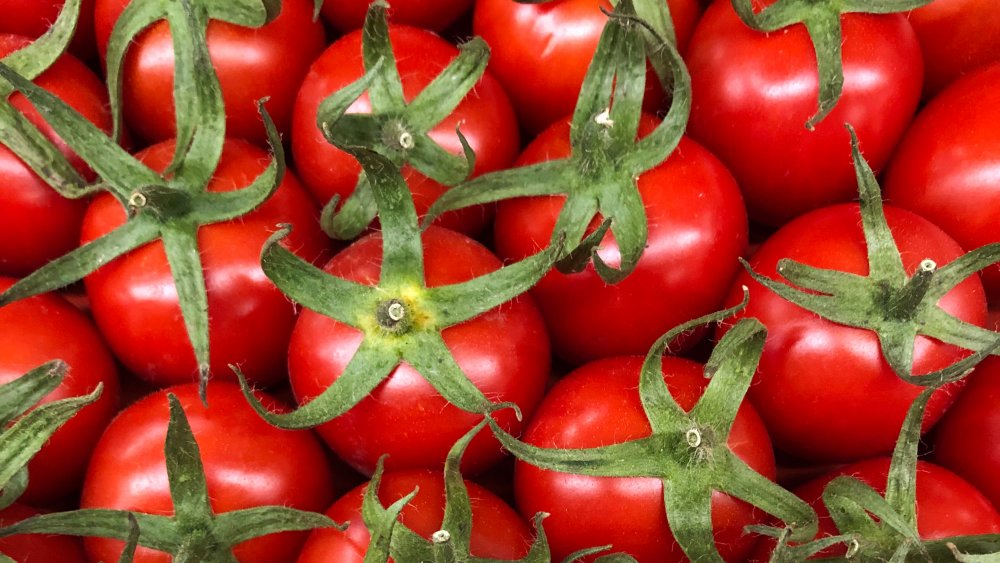The Scientific Reason You Should Add Salt To Your Tomatoes
Your body doesn't produce salt but without it, you wouldn't survive (via The Atlantic). Our muscles and our nerves need it like flowers need bees or mashed potatoes need gravy. And it turns out tomatoes need salt, too. Specifically, they need it for a process called osmosis (via Serious Eats). Think of salt like a magnet drawing the tomato's juices from the inside of a tomato's cells (a low-solute concentration) through the cell's membrane to the outside of the cells (a high-solute concentration).
Why would you want a tomato to release its juices? Adding water to things dilutes their flavor. It stands to reason that when you drain the juice from a tomato, you heighten the sweetness and tartness that make a tomato a tomato. In other words, salt helps a tomato become a better version of itself. Don't worry: you can salt your tomatoes no matter whether you're preparing a sweet or salty tomato-infused dish. That's because, according to Science Focus, when you use just a pinch of it, salt reduces bitterness while increasing sweet, sour, and umami flavor profiles. When you use it generously, on the other hand, salt reduces sweet flavors while increasing umami. Like we said, salt is pretty miraculous.
How to salt your tomatoes like a pro
If you're rushing to your cabinet and getting ready to salt your tomatoes like there's no tomorrow, stop. There's a right way and a wrong way to do this. As established, when you salt the tomatoes, you're drawing water through your tomatoes' cells' walls. But as HuffPost points out, in doing so, you run the risk of permanently damaging your tomatoes' structural integrity.
How do you salt your tomatoes without messing with their texture? One suggestion is to brine them. Pickled Plum says this method works best with smaller tomatoes (think cherry or grape), and it's a relatively quick and painless process. The recommends using three teaspoons of sea salt per two cups of water. Simply add your tomatoes to the water and let them sit for 30 minutes. Then, drain and rinse. As HuffPost points out, the process is not only gentler on the skin of the tomato, but it will also ensure that you're evenly distributing the salt (and its umami enhancing properties) through the entire fruit. Yes, a tomato is a fruit (or maybe it's a vegetable), but that's another story.

